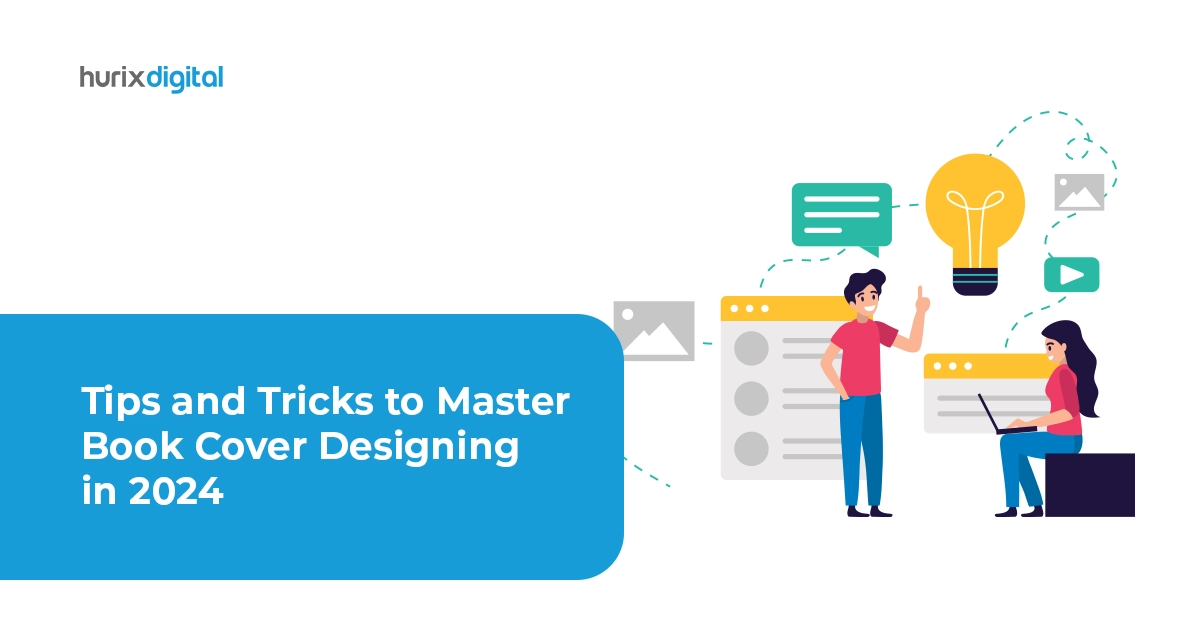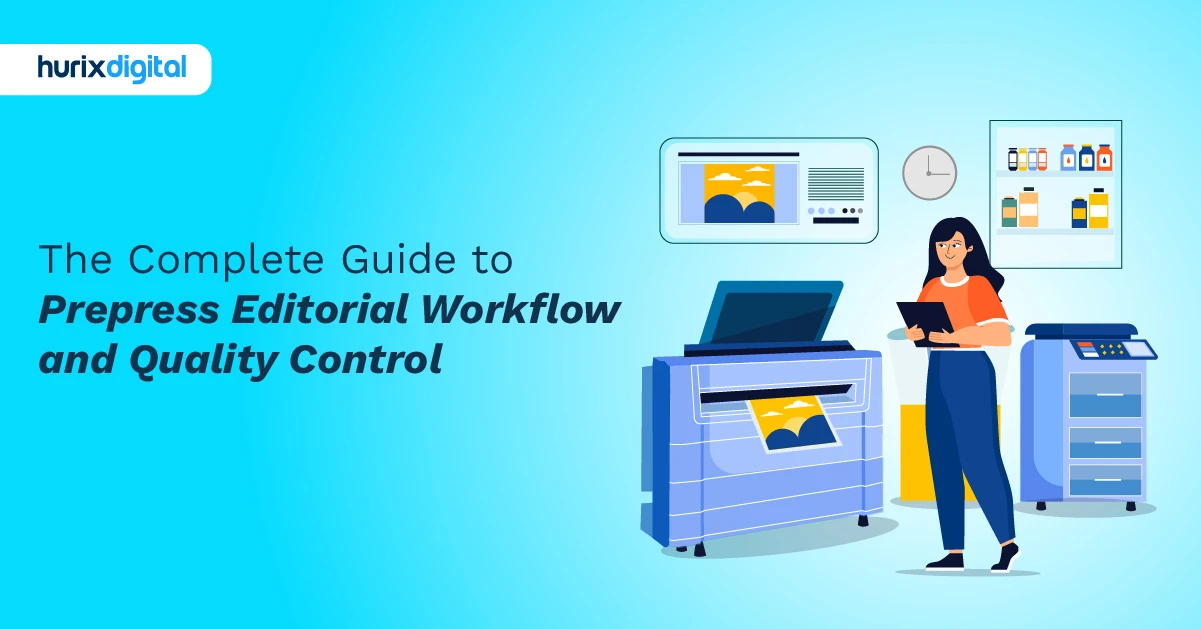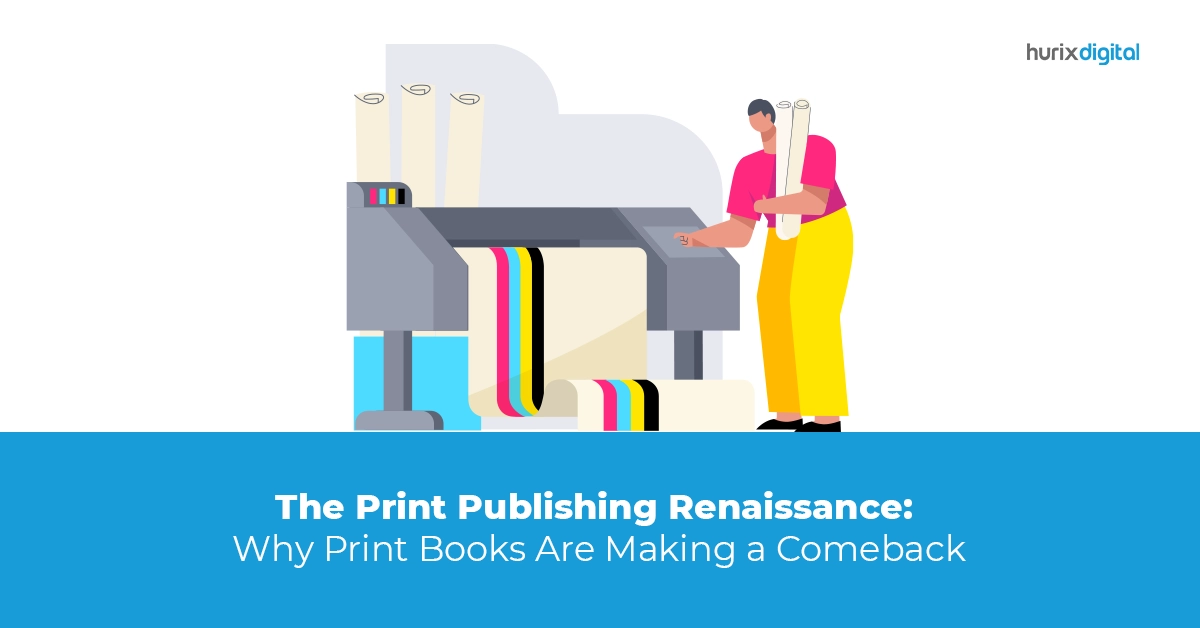
Tips and Tricks to Master Book Cover Designing in 2024
Summary
This article delves into valuable tips and techniques for crafting eye-catching book covers for print publishing in 2024.
For centuries, the book cover design has been considered to be the book’s most valuable marketing asset in the print publishing world. Though, at present, eBooks and audiobooks have captured the publishing industry vastly, print publishing remains a key player in the sector,
Nevertheless, print books still have a special place in the publishing world, with the cover being the most important feature of their success. A book with a very attractive cover will surely attract people who look at the cover to get a clue about what they are going to read, express the book’s tone and content, as well as boost sales.
This article discussed what makes a book cover attractive. It covers the various aspects to note as well as tips and techniques for designing book covers that are appealing to print readers in 2024.
Table of Contents:
- Understanding the Elements of Eye-Catching Book Covers
- Things to Consider for Designing Eye-Catching Book Covers
- How to Create Engaging Visuals
- Practical Tips for Designing Book Covers in 2024
- Conclusion
Understanding the Elements of Eye-Catching Book Covers
Nailing down the best book covers for the print edition of 2024 demands a thorough grasp of the key visual components. Pictorial and typographical elements, color palettes, and font combos must be used in a way to attracts readers and gives a sense of the respective themes.
It is important to complement the content of the book with the visual elements without making them look like abstract shapes, symbols, or fonts that represent a particular genre.
Attention to detail is key when it comes to each element. This way, the cover is not just eye-catching but also effectively communicates the gist of the book at first glance.
Thus, authors and publishers can create book covers that combine both visual attractiveness and the reader’s emotional response while remaining within the limits of the genre.
Also Read: 6 Factors to Consider While Digitizing Books at Scale
Things to Consider for Designing Eye-Catching Book Covers
When creating eye-catching designs for book covers for print publishing in 2024, there are several key considerations to keep in mind:
- Tone and Style Alignment: Select a font style that relates to the book’s tone and genre. For example, a stylish cursive font can visualize a romantic historical novel, whereas a futuristic science fiction book might use a sophisticated sans serif typeface.
- Matching Visuals: Make sure that whatever photographs or illustrations are on the cover of the book are related to both the subject matter and the setting. An essay collection may be bright and lively, whereas a mystery book might have a serious tone and a dismal location.
- Communicating Key Aspects: Think about which visual elements should be used to effectively represent the important topics of the book. The cover offers an opportunity for the readers to see a preliminary view of the pages of the book.
- Color Psychology: Make use of colors to reflect the tone and determine the overall mood of the book cover. Different colors may signify different emotions and themes, so you should opt for a color scheme that is congruent with the genre and content of your book.
- Typography Hierarchy: Maintain good typography order, which will facilitate the reader’s view and highlight the most important information on the front cover. Use different font sizes, styles, and weights to create visual interest and ensure the title and author name are visible effectively.
How to Create Engaging Visuals
When designing a book cover, it’s crucial to ensure that the visual elements effectively communicate the book’s themes and narrative. Here are some key techniques to consider:
- Alignment with Content: Give careful thought to how design decisions connect to the content itself. The visual elements such as colors, typography, and artwork should complement the concepts and storyline of the book.
- Incorporating Relevant Elements: Incorporate relevant elements that resonate with the book’s subject matter. For instance, relevant instruments could be included in the visuals for a biography of a well-known musician.
- Symbolic Representations: Sometimes, the best illustrations are those that are straightforward and metaphorical. Instead of just choosing design components to make the cover appear good, choose aspects that strategically complement the content inside the book.
- Minimalist Approach: Design a clean cover with simple lines and lots of empty space. Use a few colors to make it stand out. Keep it simple so people remember it.
- Emotive Imagery: Use visuals that are emotionally charged and evocative, which show the essence of the book’s theme and cause an emotional reaction in the reader.
Practical Tips for Designing Book Covers in 2024
When it comes to designing book covers for print publishing in 2024, there are several practical tips to keep in mind to ensure your cover stands out and effectively communicates the essence of the book.
Tip 1: Pay Attention to Visual Appeal
Creating a visually appealing book cover is essential to catch the eye of potential readers. To achieve this:
- Use bold, vibrant colors that evoke the book’s tone and genre.
- Incorporate intriguing, high-quality graphics or photographs that capture the reader’s attention.
- Experiment with unique, eye-catching layouts and compositions to make the cover visually striking.
- Test several graphic aspects using A/B testing to see which ones resonate the most.
- Enticing visuals are key to creating a cover that stands out and draws readers in.
Tip 2: Select Design Elements Complementing Your Content
When looking into the cover options, pick the design that coheres with the book’s content. To do this:
- Thoroughly study the book’s themes, characters, and plot to pinpoint the visual elements that can bring the book to life.
- Use symbolism or figurative language to show lighter elements of the story.
- Try different design approaches, such as the minimalist or abstract style, to see which is the perfect match for the content.
Tip 3: Use Distinctive, Bold Typography
Strong typography is crucial for a successful book cover design. To make an impact:
- Choose fonts that are bold, distinctive, and immediately grab the reader’s attention.
- Experiment with different font pairings and sizes to create a visually compelling hierarchy of information.
- Ensure the text layout and placement enhance the overall visual appeal and guide the reader’s eye.
Tip 4: Understand the Important Design Elements
Include essential elements like the title, author name, and illustrative or photographic elements in your book cover design. To make these elements effective:
- Carefully position and size these elements to create a balanced, harmonious composition.
- Ensure the title and author name are prominently displayed and easy to read.
- Integrate any illustrative or photographic elements seamlessly into the overall design.
Conclusion
To sum up, creating a visually attractive book cover for print publication in 2024 requires a tactical mindset. Authors and publishers can create covers that express the book’s contents and themes by emphasizing design and conveying the book’s tone and style.
The fact that reading is becoming digitized with eBooks and audiobooks makes it necessary to comprehend the role of print publishing and how it influences book covers in capturing readers’ interest and sales. By implementing such main ideas, authors and publishers will be able to differentiate their book covers from the multitude of other books that prevail.
Hurix Digital is a leading provider of end-to-end publishing solutions, featuring professional designing of book covers as one of its services. If you are interested in making an appealing book cover for your print publishing project, take advantage of the opportunity to collaborate with Hurix Digital. Kindly contact us for more details about our services.

Vice President – Content Transformation at HurixDigital, based in Chennai. With nearly 20 years in digital content, he leads large-scale transformation and accessibility initiatives. A frequent presenter (e.g., London Book Fair 2025), Gokulnath drives AI-powered publishing solutions and inclusive content strategies for global clients







